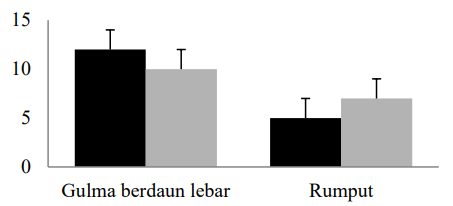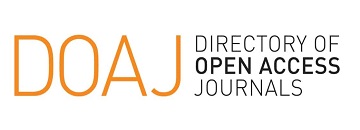Estimating The Abundance and Composition of Soil Seed Bank at Bekol Savanna in Baluran National Park, West Java

Downloads
Downloads
Arnolds, J.L., Musil, C.F., Rebelo, A.G., Kru ger, & G.H.J. (2015). Experimental climate warming enforces seed dormancy in South African proteaceae but seedling drought resilience exceeds summer drought periods. Oecologia, 177, 1103–1116.
Balaguru, B., Soosairaj, S., Nagamurugan, N., Ravindrand, R., & Ahamed, K.A. (2016). Native vegetation pattern and the spread of three invasive species in Palani Hill National Park, Western Ghats of India. Acta Ecologica Sinica, 36, 367–376.
Baskin, C.C., & Baskin, J.M. (2014). Seeds. Ecology, biogeography, and evolution of dormancy and germination. San Diego: Academic Press.
Cui, L., Li, W., Zhao, X, Zhang, M., Lei, Y., Zhang, Y., Gao, R, Kang, X., Suna, B., & Zhang, Y. (2016). The relationship between standing vegetation and the soil seed bankalong the shores of Lake Taihu, China. Ecological Engineering, 90, 278–288.
Douh, C., Daï noub, K., Loumetoc, J.J., Moutsambotec, J.M., Fayollea, A., Tossob, F., Fornif, E., Gourlet-Fleuryf, S., & Douceta, J.L. (2018). Soil seed bank characteristics in two central African forest types and implications for forest restoration. Forest Ecology and Management, 409, 766–776.
Fenner, M., & Thompson, K. (2005). The ecology of seed. Cambrige: Cambrige University Press.
Higgins, S.I., & Richardson, D.M. (2014). Invasive plants have broader physiological niches. Proceedings of the National Academy of Sciences of the United States of America, 111, 10610–10614.
Hooper, D.U., Adair, E.C., Cardinale, B.J., Byrnes, J.E., Hungate, B.A., Matulich, K.L., Gonzalez, A., Duffy, J.E., Gamfeldt, L., & O'Connor, M.I. (2012). A global synthesis reveals biodiversity loss as a major driver of ecosystem change. Nature, 486, 105–108.
Hosseini, P., Hoveizeh, K., Kirwan, B., Hamid, R., Mashhadi,& Mostafa, O. (2014). Weed seed bank as affected by crop rotation and disturbance. Crop Protection, 64, 1-6.
Ma, M., Zhou, X., & Du, G. (2010). Role of soil seed bank along a disturbance gradient in an alpine meadow on the Tibet plateau. Journal Flora-Morphology, Distribution, Functional Ecology of Plants, 205, 128–134.
Ma, M., Zhou, X., Zhen, M., & Du, G. (2012). Composition of the soil seed bank and vegetation changes after wetland drying and soil salinization on the Tibetan Plateau. Ecological Engineering, 44, 18– 24.
Martin, A.C., & Barkley, W.D. (2000). Seed identification manual. New Jersey: The Blackburn Press.
Mesgaran, M.B., Mashhadi, H.R., Zand, E., & Alizadeh, H.M. (2007). Comparison of three methodologies for efficient seed extraction in studies of Soil seed banks. Weed Research, 47(6), 472-478.
O’Donnell, J., Fryirs, K., & Leishman, M.R. (2014). Digging deep for diversity: Riparian seed bank abundance and species richness in relation to burial depth. Journal Freshwater Biology, 59(1), 100–113.
Powell, K.I., Chase, J.M., & Knight, T.M. (2011). A synthesis of plant invasion effects on biodiversity across spatial scales. American Journal of Botany, 98, 539– 548.
Santosa, E., Zaman, S., & Puspitasari, I.D. (2009). Simpanan biji gulma dalam tanah di perkebunan teh pada berbagai tahun pangkas. Jurnal Agronomi Indonesia, 37(1), 46–54.
Savadogo, P., Sanou, L., Djibril, D.S., Bognounou, F., & Thiombiano, A. (2016). Relationships between soil seed banks and above-ground vegetation along a disturbance gradient in the W National Park transboundary biosphere reserve, West Africa. Journal of Plant Ecology, 10, 349–363.
Scott, K., Setterfield, S., Douglas, M., & Anderson, A. (2010). Seed banks confer resilience to savanna grass-layer plants during seasonal disturbance. Acta Oecologica, 36, 202-210.
Shang, Z., Yang, S., Wang, Y., Shic, J., Dinga, L., & Longa, R. (2016). Soil seed bank and its relation with above-ground vegetation along the degraded gradients of alpine meadow. Ecological Engineering, 90, 268– 277.
Siswoyo, A. (2014). Pemodelan Spasial Kesesuaian Habitat Akasia Berduri (Acacia nilotica) di Taman Nasional Baluran. Tesis. Program Magister Institut Pertanian Bogor. Bogor. Hal: 1-48.
Soerjani, M., Koesterman, A.J.G.H., & Tjitrosoepomo, G. (1987). Weeds of rice in Indonesia. Jakarta: Balai Pustaka.
Sofiah, S., Setiadi, D., & Widyatmoko, D. (2013). Pola penyebaran, kelimpahan dan asosiasi bambu pada komunitas tumbuhan di Taman Wisata Alam Gunung Baung Jawa Timur. Berita Biologi, 12(2), 239-247.
Tjitrosoedirdjo, S., Mawardi, I., Setiabudi, Syaiful, & Sri, S.T. (2013). Chemical control of Acacia nilotica under medium density regime populations and broadleaved weeds in Bekol Savanna, Baluran National Park East Java Indonesia. The Role of Weed Science in Supporting Food Security by 2020. Oktober 22-25. Asian-Pacific Weed Science Society. hlm 264 – 270.
Van Der Wal, R., Truscott, A., Pearce, I.S.K., Cole, L., & Harris, M.P., Wanless, S. (2008). Multiple anthropogenic changes cause biodiversity loss through plant invasion. Global Change Biology, 14, 1428–1436.
Van Langevelde, F., Tessema, Z.K., de Boer, W.F., & Prins, H.H.T. (2016). Soil seed bank dynamics under the influence of grazing as alternative explanation for herbaceous vegetation transitions in semi-arid rangelands. Ecological Modelling, 337, 253–261.
Wang, Y.C., Mark, K.J. O., Rend, G.H., Jianga, D.M., Musaa, A., Miao, R.H., Lia, X.M., Zhou, Q.L., Jiao, Q.T., & Lin, J.Z. (2015). Species shifts in above-ground vegetation and the soil seedbank in the inter-dune lowlands of an active dune field in Inner Mongolia, China. Basic and Applied Ecology, 16, 490–499.
Yang, D., & Wei, L. (2013). Soil seed bank and aboveground vegetation along a successional gradient on the shores of an oxbow. Journal of Aquatic Botany, 110, 67– 77.
Yehnjong, P.S. (2014). Paleozoic Seed Bank and Their Ecological Significance. Tesis. Program Magister East Tennessee State University, Tennessee. Amerika Serikat. http://dc.etsu.edu/etd/2316. Diakses 18 Desember 2017.








